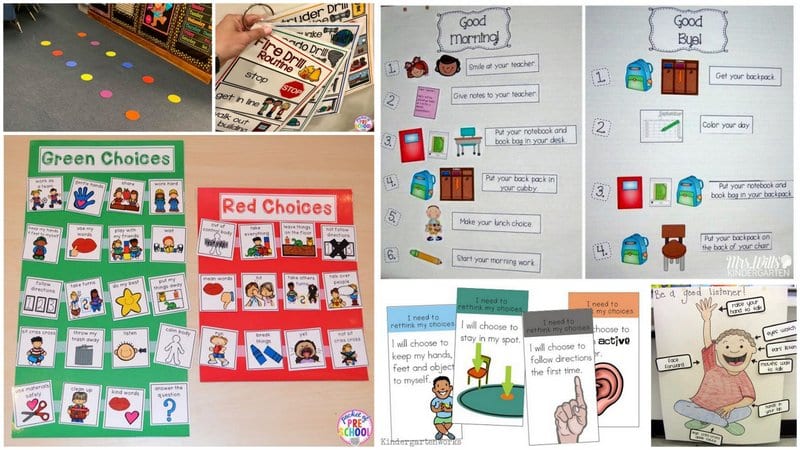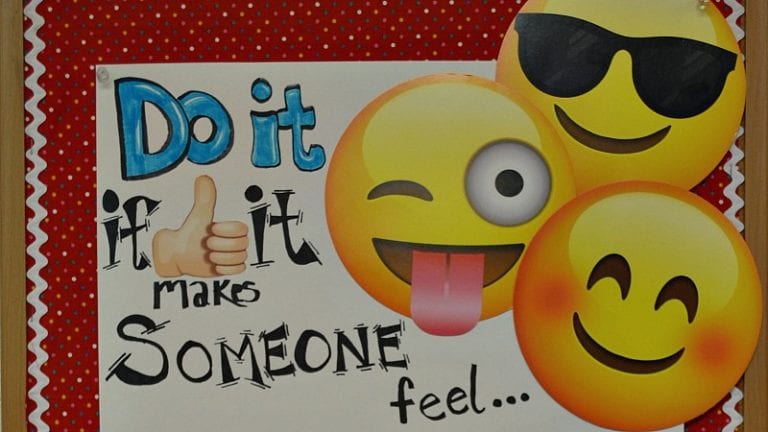Oh, those shining happy kindergarten faces! Everything is new and exciting, and they have their whole school career ahead of them. Where does a teacher even begin to teach them how school works? No worries, we’ve got the best kindergarten classroom management tips for you, all from teachers who’ve been there and done that.
1. Begin at the beginning.
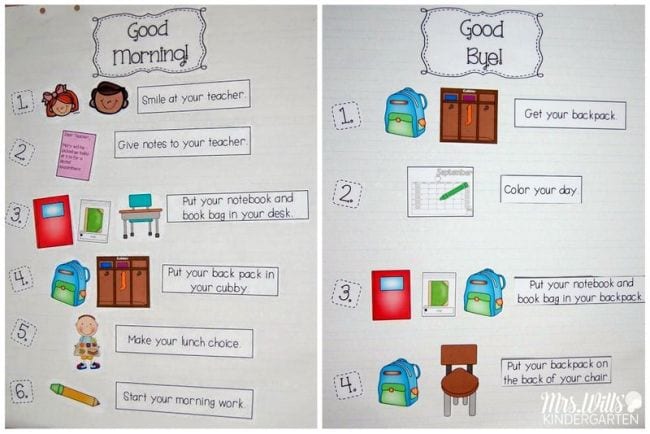
When it comes to kindergarten classroom management, it’s important to remember that at least some of these kids have never been in a structured school setting before. They’ll need to learn all the expected rules and behaviors, so start with the most basic of basics and work your way up. Oh, and remember that long vacations like Christmas or spring break usually require a pretty strong re-set of expectations when you’re back in the classroom again.
Learn more: Mrs. Wills’ Kindergarten
2. It’s all about procedures, procedures, procedures.
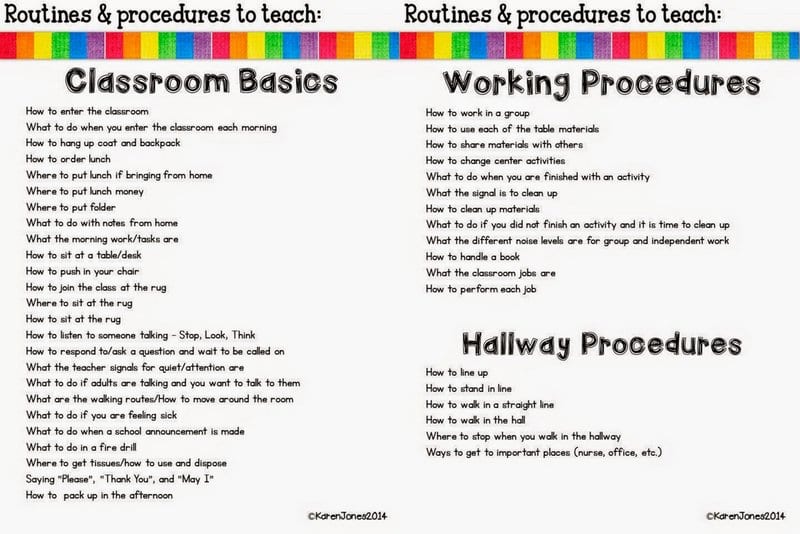
When you start writing it down, it’s really surprising the number of behaviors kids are expected to know by the end of kindergarten. In between teaching them to read and count, kindergarten teachers also help little ones understand how to behave in a classroom, how to walk in a line, the right way and time to sharpen a pencil, and so much more. This incredibly detailed list (there are two more pages at the link!) is a good reference for all the many procedures kindies need to learn.
Learn more: Mrs. Jones’s Class
[contextly_auto_sidebar]
3. Show them what correct (and incorrect) behaviors look like.
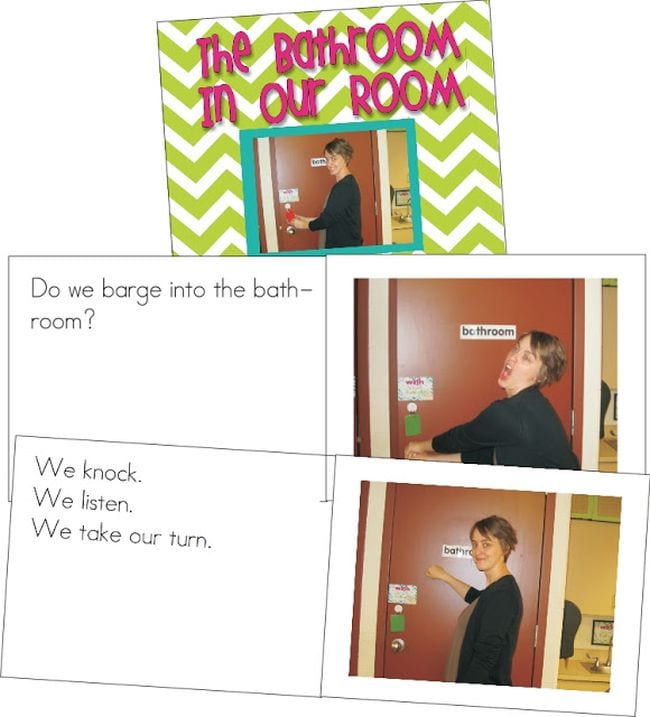
Source: KindergartenWorks
Teacher Elizabeth Coller has five simple steps for teaching procedures to kinders, and modeling is an important part. “I do the first modeling. I get up and literally show the students what to do as I talk through the steps of the procedure,” she explains. Sometimes she shows her kids the wrong way to do things, too. “The students love this – and it is a great way to demonstrate some common things you could see without a procedure in place.”
Learn more: The Kinderhearted Classroom
4. Practice, practice, practice.
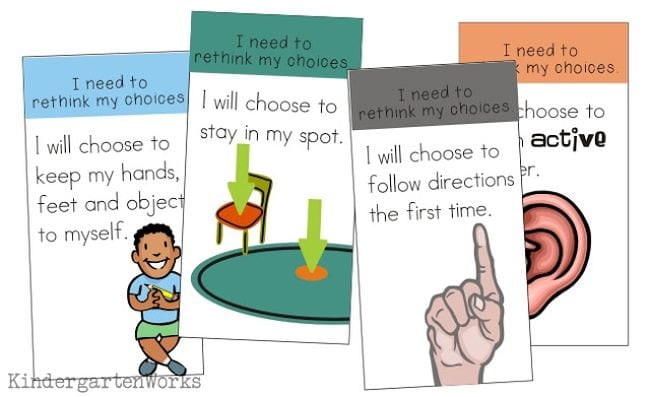
They’re not always going to get it right the first time (or the twelfth time, for that matter). Be consistent, insistent, and persistent to help them develop good habits. It also helps to make sure they understand the “why” behind procedures. (“We put our toys away so others don’t trip over them and hurt themselves.”) Be patient; recognize when they’re trying to get it right, and understand that sometimes they’ll get it wrong (especially in the beginning).
Learn more: KindergartenWorks
5. Give lots of visual cues.
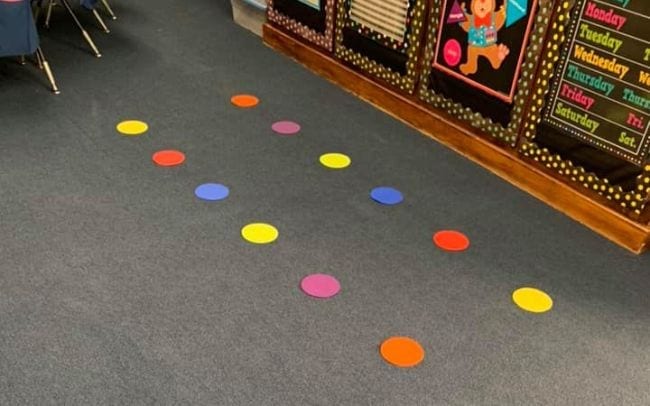
Visual reminders can help trigger the right kindergarten classroom management behaviors. Carpet spots are a terrific example: use them to show kids where to sit during carpet time, where to stand when it’s time to line up, and more.
6. Use words and pictures on charts and cards.
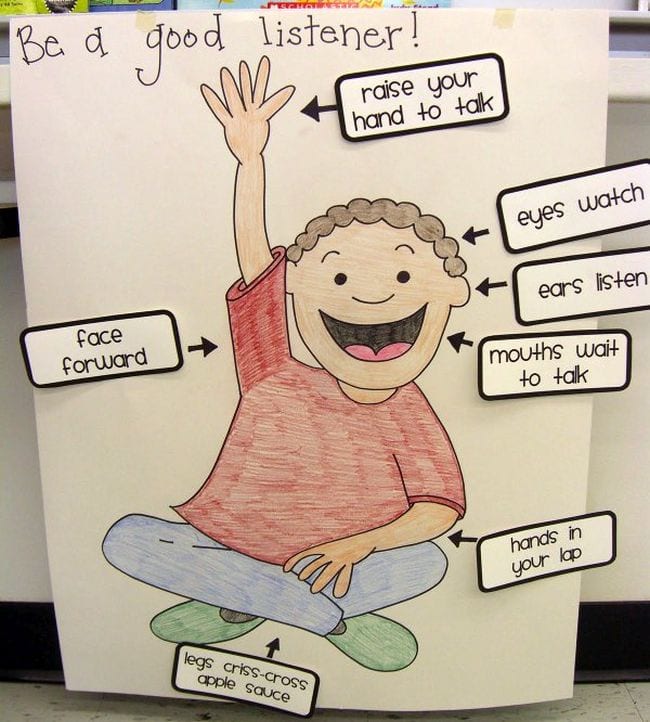
Many kindergarteners are still learning to read, so combine written directions with images on your kindergarten classroom management anchor charts and procedure cards. This will ensure kids at every level can understand the message.
Learn more: F is For First Grade
7. A place for everything, and everything in its place.
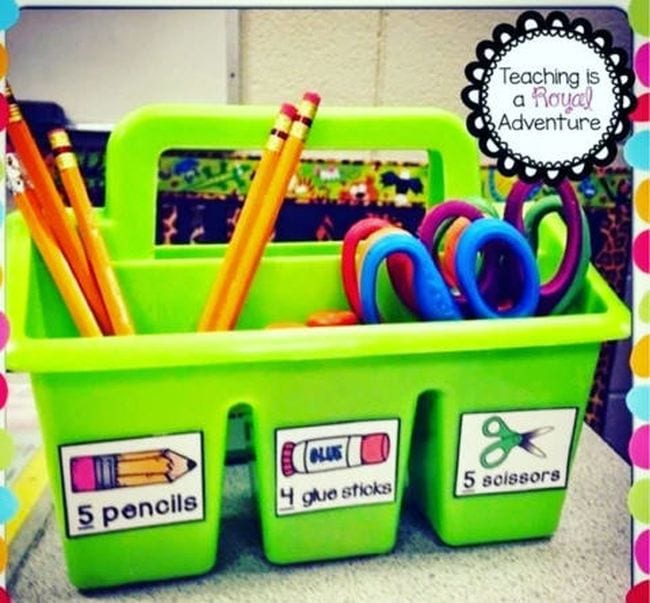
A big part of kindergarten classroom management is staying organized. Teach your littles to help with this: label EVERYTHING, and be sure they always take the time to put things where they’re supposed to go.
Learn more: Teaching is a Royal Adventure
8. Introduce them to The Doorbell.
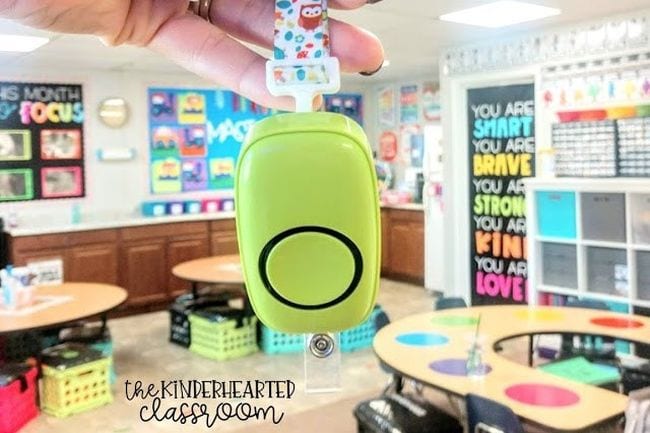
Source: The Kinderhearted Classroom
If you’re not already using a doorbell as part of your kindergarten classroom management strategy, now’s the time to start! Teach kids to listen for the different sounds so they know when it’s time to stop working, be quiet, transition to the next activity, and more. Here’s how teachers use doorbells in their classrooms.
9. Teach them a few good attention-getters.
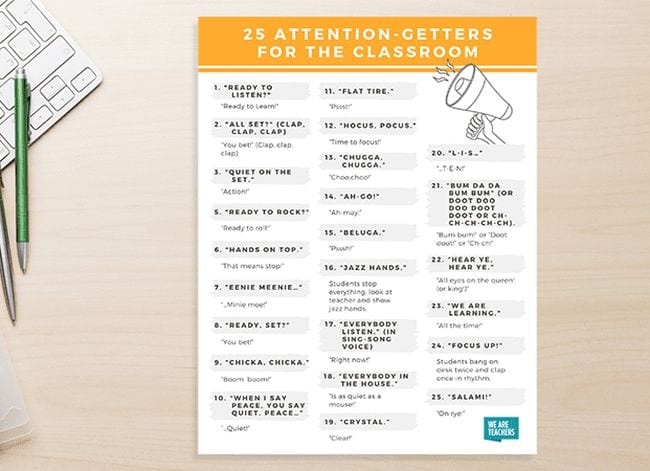
These simple call-and-response patterns have long been a hit with elementary school teachers. Most teachers have their favorites, but if you’re new the to classroom and not sure what to pick, talk to other teachers in your school. First and second grade teachers will appreciate it if kids come to their classrooms already knowing the attention-getters they love to use.
10. Give them responsibilities.
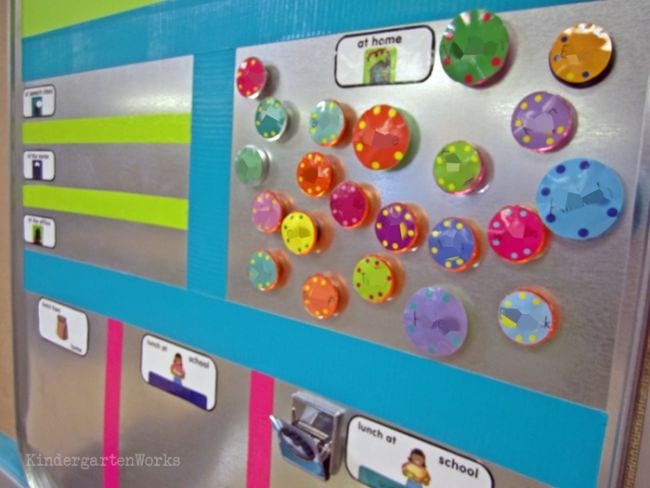
As kids learn the rules and procedures, let them take on some of the responsibilities too. Stop taking attendance every day; introduce a Check In Chart instead. Don’t collect papers and pass out supplies—teach them where to turn things in and find the materials they need. Start small and build to bigger things. You’ll be surprised at what they can handle!
Learn more: KindergartenWorks
11. Celebrate their smallest achievements.
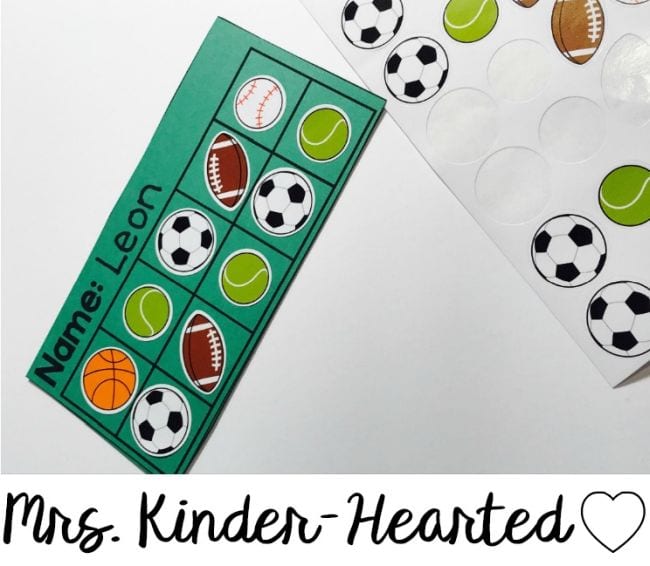
When everything is new, there are a lot of small achievements to celebrate every single day. Be generous and specific with your positive feedback. If you want to establish a reward system, keep it small and simple. These sticker cards are one fun way to do it. But really, a smile and “Nice job lining up quietly, James!” can be just as effective. Little kids thrive on this kind of thing, so sprinkle kindness like confetti. (Find more ideas here.)
Learn more: Mrs. Kinder-Hearted
12. Re-direct them when they make poor choices.
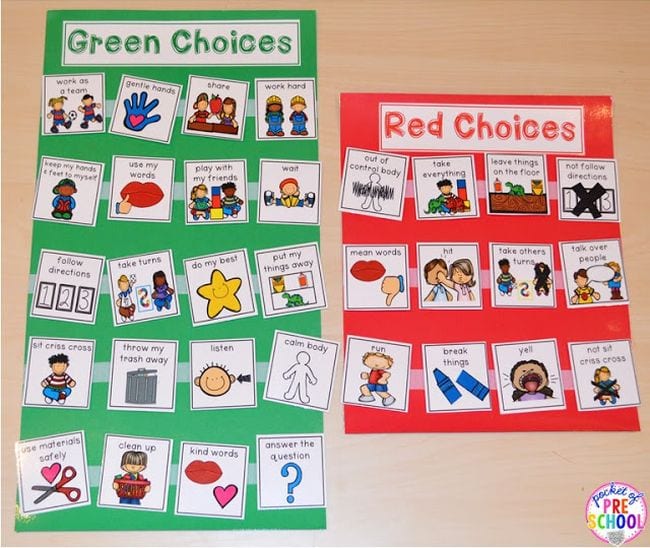
Will they make mistakes? Oh yes, indeed! Sometimes they’ll know they’re doing it, and sometimes they won’t even realize what they’re doing is wrong. Your job as a teacher is to help them recognize good choices and learn to make them as often as possible. Keep things clear and simple; be gentle but firm and consistent. Remember that student behavior can really mean a lot of different things, and learn to recognize problems like Oppositional Defiant Disorder too.
Learn more: Pocket of Preschool: Green and Red Choices
13. Create a Calm Down Corner.
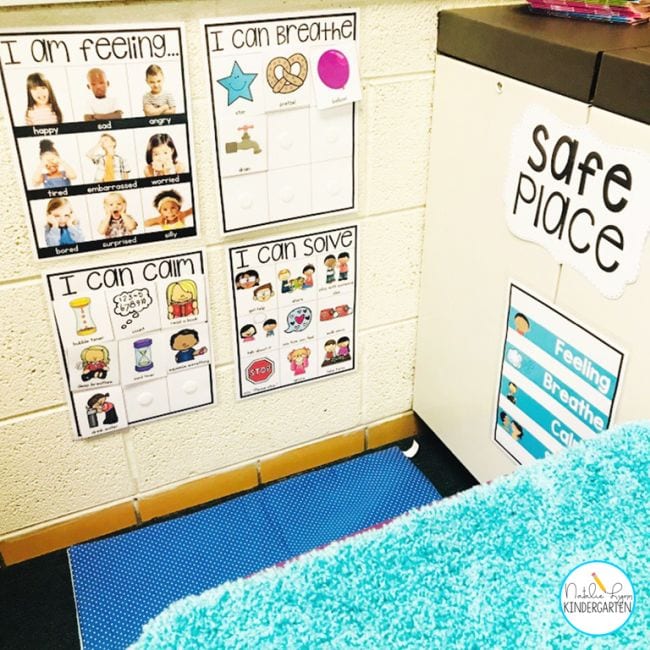
Leave “time outs” behind in preschool and instead create a cozy place in your classroom for kids who need a minute to calm down and re-think their choices. Be sure you take the time to teach little learners about its purpose and your expectations for how they’ll use it. (Find good items for your calm-down kit here.)
Learn more: Natalie Lynn Kindergarten
14. Prepare kids for a substitute teacher.
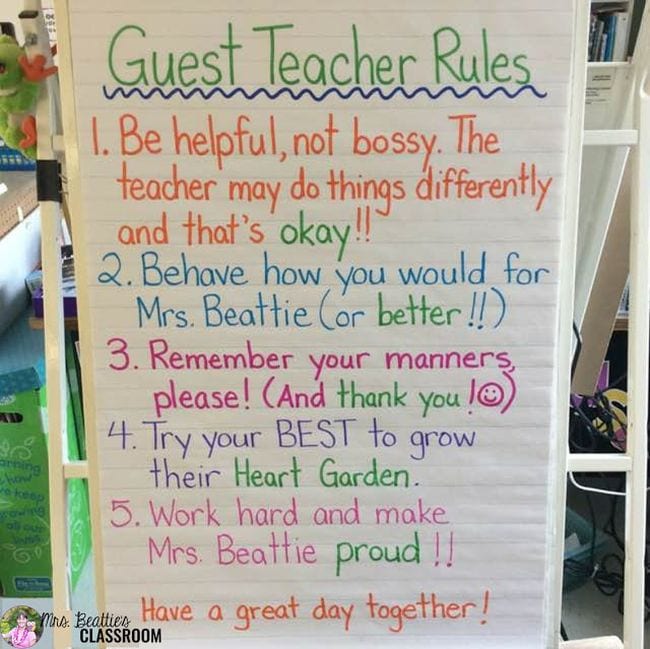
It can be very disconcerting and confusing to a young child to walk into their classroom and find a different, unfamiliar grown-up in charge for the day. Talk about subs early in the school year, so they’ll be prepared when the day actually comes. The most important rule: their behavior shouldn’t change just because their teacher does!
Learn more: Mrs. Beattie’s Classroom
15. Help them learn to be flexible.
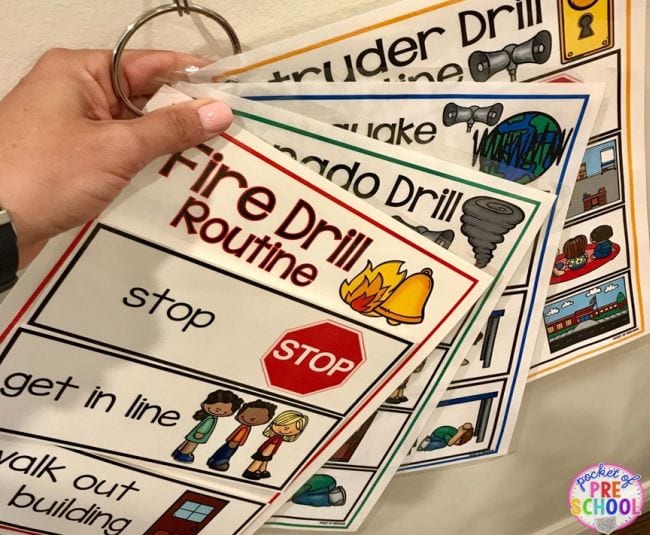
A lot of kindergarten classroom management time is spent getting kids into a routine. But what happens when the routine is interrupted? Fire drills, weather delays, school assemblies, guest speakers … all of these things and more can disrupt a school routine in no time flat. How do you prepare your kiddos to deal with these disruptions?
One good way to is talk in advance about anything you can predict. Practice emergency drills in your classroom, before they need to participate school-wide. Try mixing up your routine on a fairly regular basis, too; move counting practice from before lunch to the end of the day; have storytime on the playground instead of the classroom carpet. Teach kids to roll with the punches, because life is definitely full of surprises.
Learn more: Pocket of Preschool: Drill Routines
16. Communicate (and set boundaries) with parents.
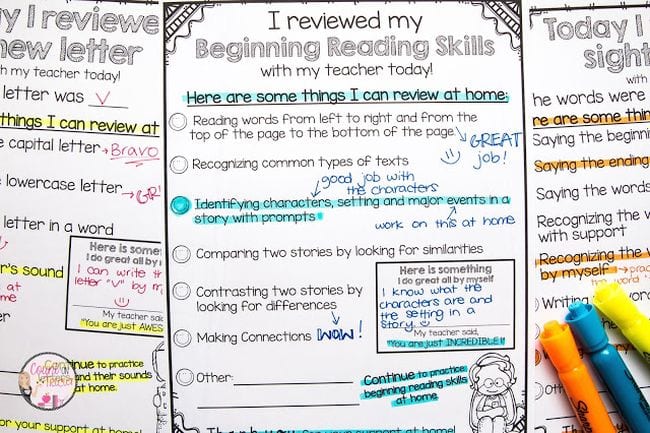
If kindergarten is the first time many kids attend school, it’s also the first time for a lot of parents. There are so many different types of parents , from those who want constant communication to those who seem to ignore everything you send home. This is the time to help parents understand the best ways they can contribute to their child’s education—and when they need to relax and let teachers do their thing.
Set a communication schedule and system, and stick to it whenever possible. This way, parents know what to expect from you. Consider your tone, especially in written communications. Be available, but not 24/7; your personal time is important and valuable. Avoid common parent communication mistakes, like not documenting interactions. Most importantly, find ways to work with parents to achieve outcomes that will make you all happy.
Learn more: Count on Tricia
Want to become a kindergarten expert? Try these 50 Tips, Tricks, and Ideas for Teaching Kindergarten!
